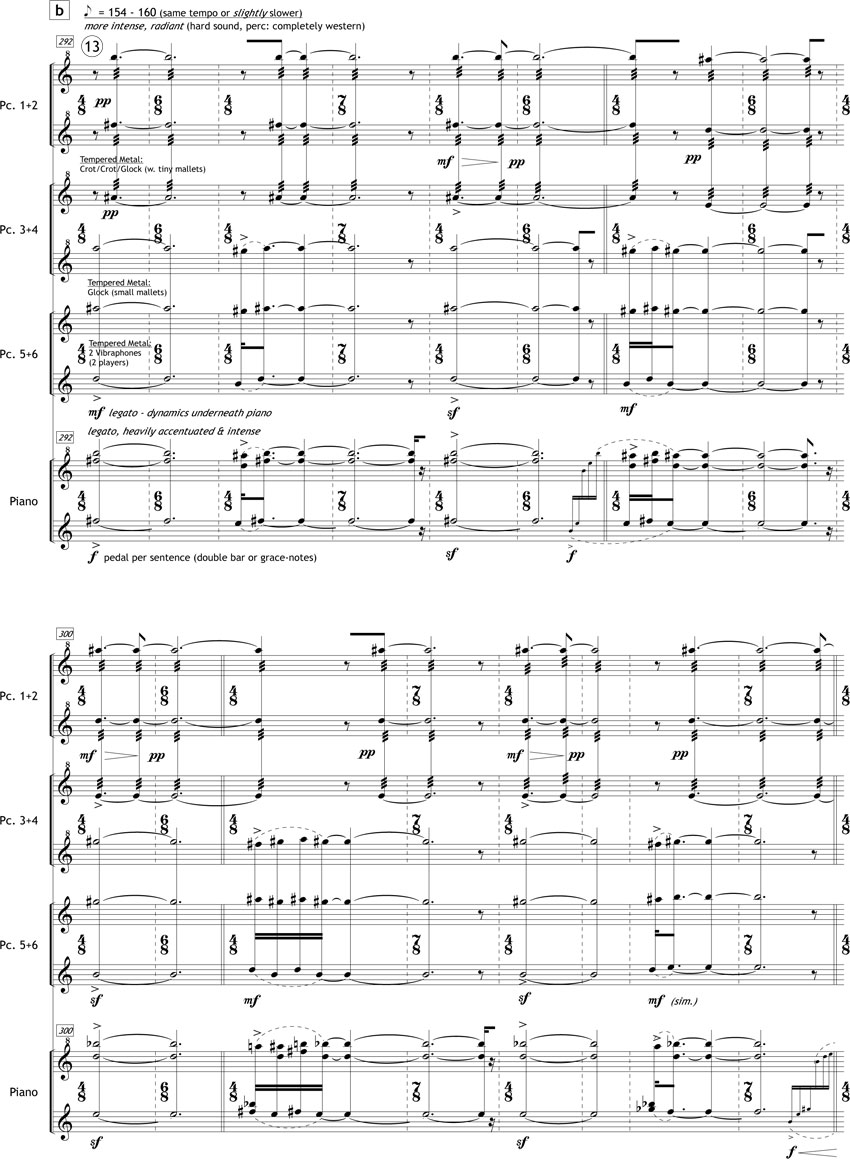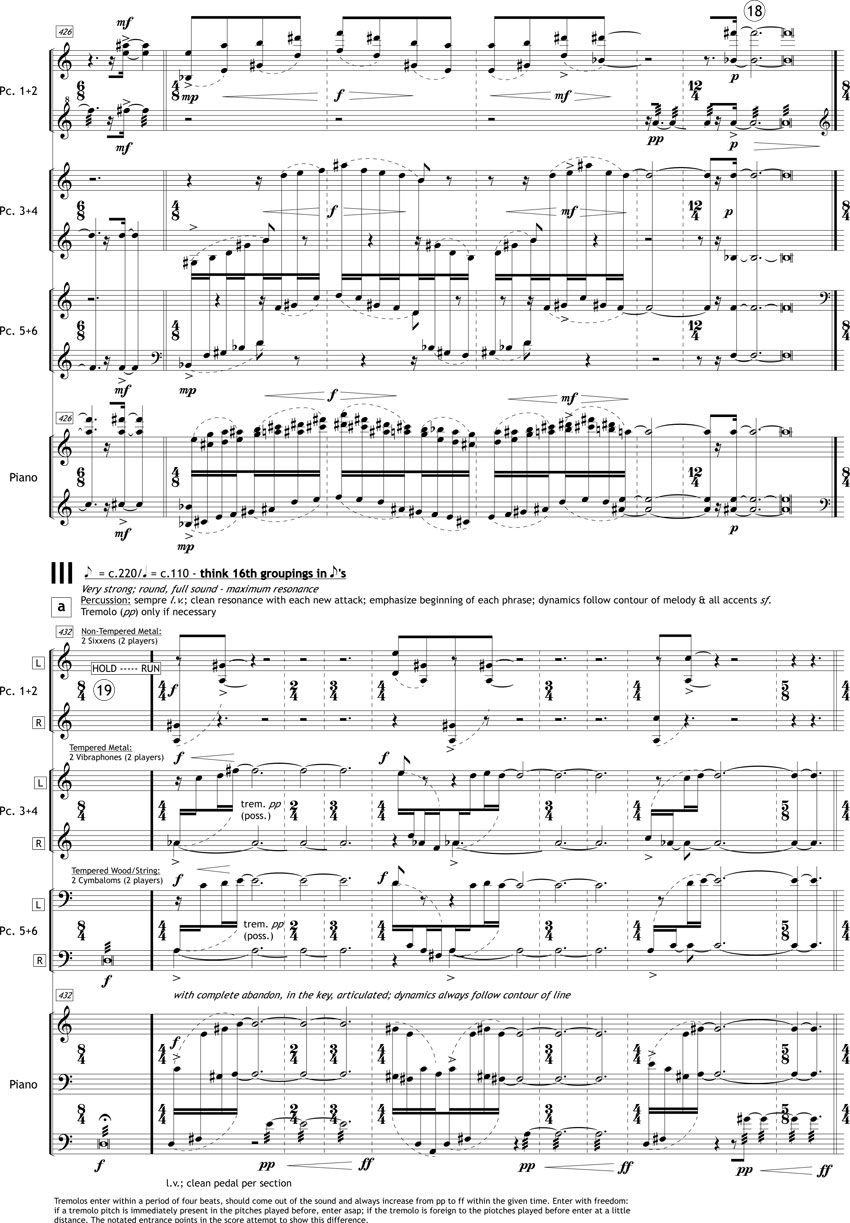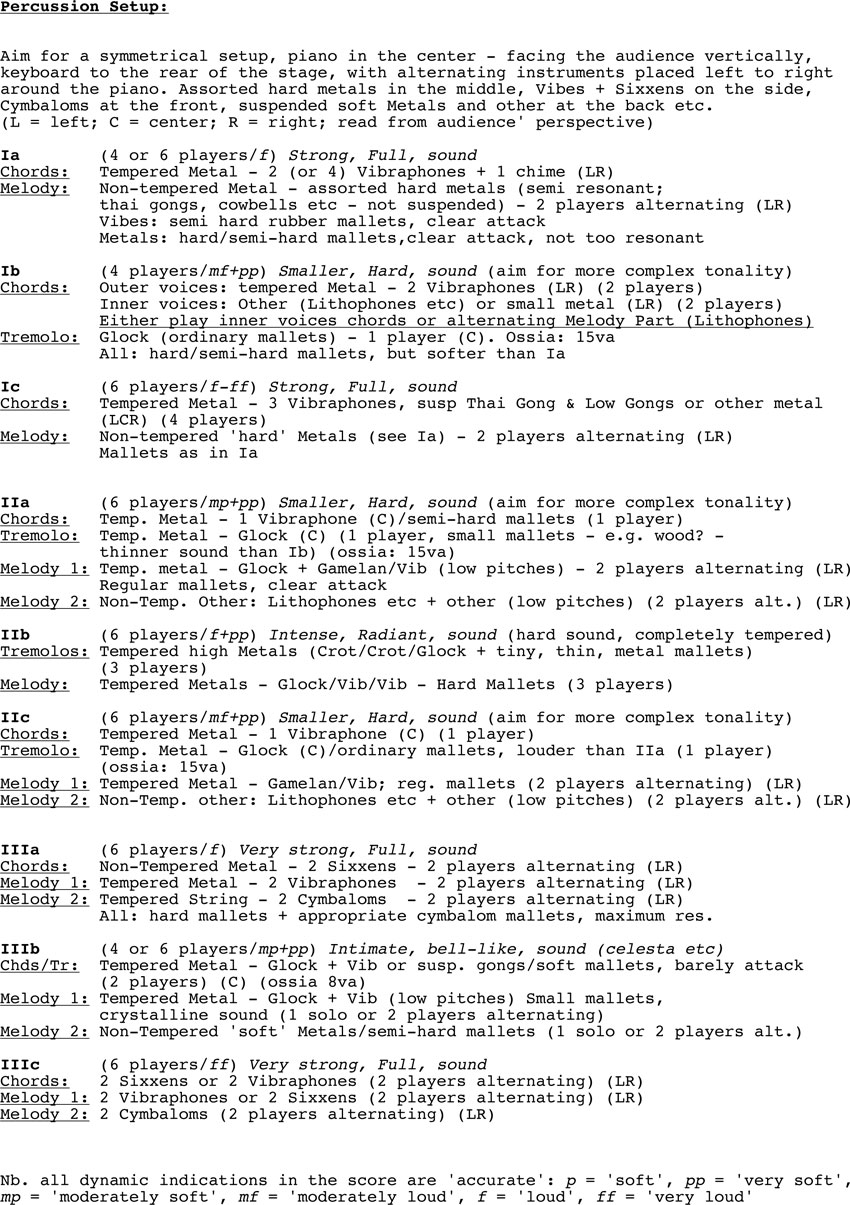No 56 Scala II (2014)
For Piano, Six Percussionists & Sinewaves
Commissioned by: Ralph van Raat & Percussion The Hague, with financial support from the Netherlands Fund for the Performing Arts
First Performance: October 6 2014, Musis Sacrum, Arnhem
Instrumentation: Piano, Six Percussionists & Sinewaves
Duration: 25’
Special Features: Performance requires sound engineer, amplification & special percussion setup
Info/Program note:
Scala II largely follows the same formal principles as Scala I: a large, self-replicating three-part fractal form built upon harmonic loopings of a single melodic line. The piece is scored for piano and a large percussion setup consisting exclusively of heterogeneous combinations of melody instruments, ranging from the conventional, via Indonesian Genders to sets of chromatic lithophones and cymbaloms, thereby augmenting the sound of the solo piano on every side, from hammered resonance to string resonance.
Like Scala I the action focusses exclusively on harmonic motion and is therefore set homophonically throughout, though both shape and duration of each individual loop within a harmonic complex varies. Both Scala I as well as Scala II in this way deal with polyphony, more specifically the question how to maintain speed in harmonic motion while including diversity in the individual lines. In order to further augment this element of motion, the setup of the ensemble is modeled on the alignment of the piano keys, with high on the left of the stage and low on the right - and the ensemble-sound moving in a likewise, stereophonic type of motion (though often alternating too fast to notice). Given the resonant characteristics of the ensemble nearly as much attention was eventually spent on composing what was not being played (i.e. the resonance) as what was being played. In 2015 Scala II was awarded the Matthijs Vermeulen Prize.




